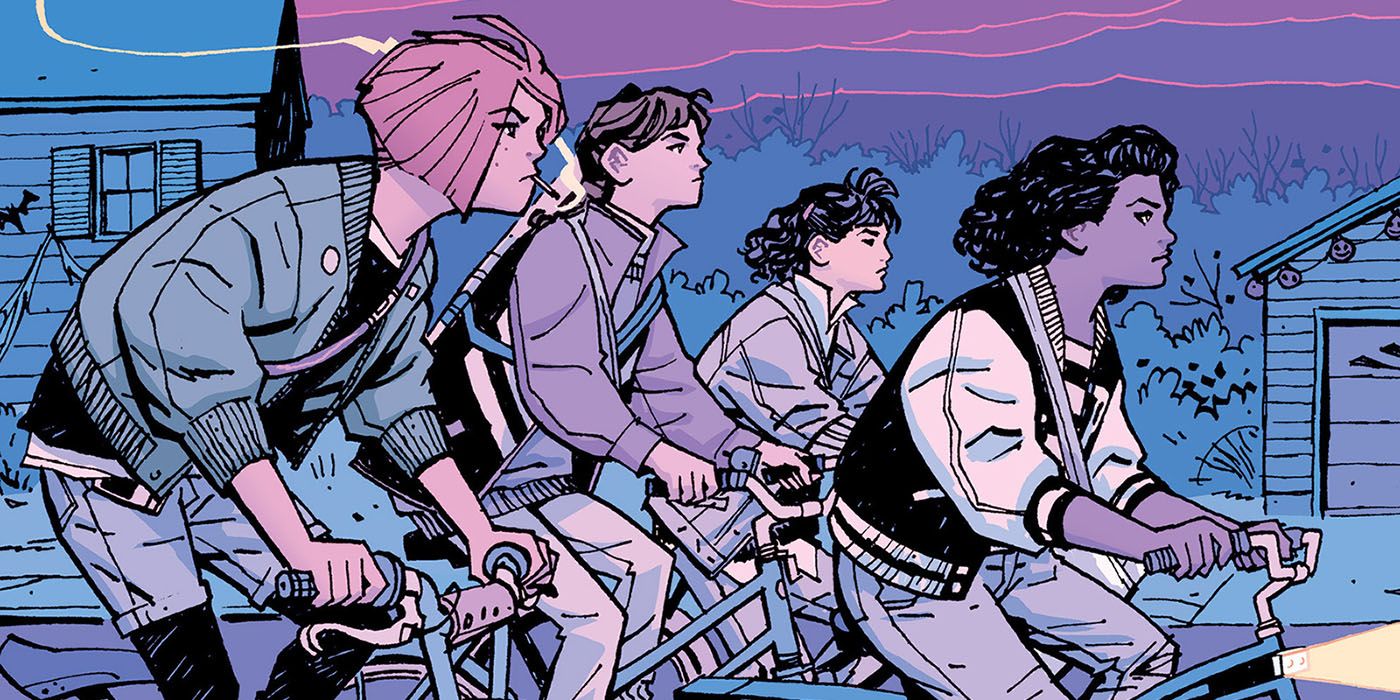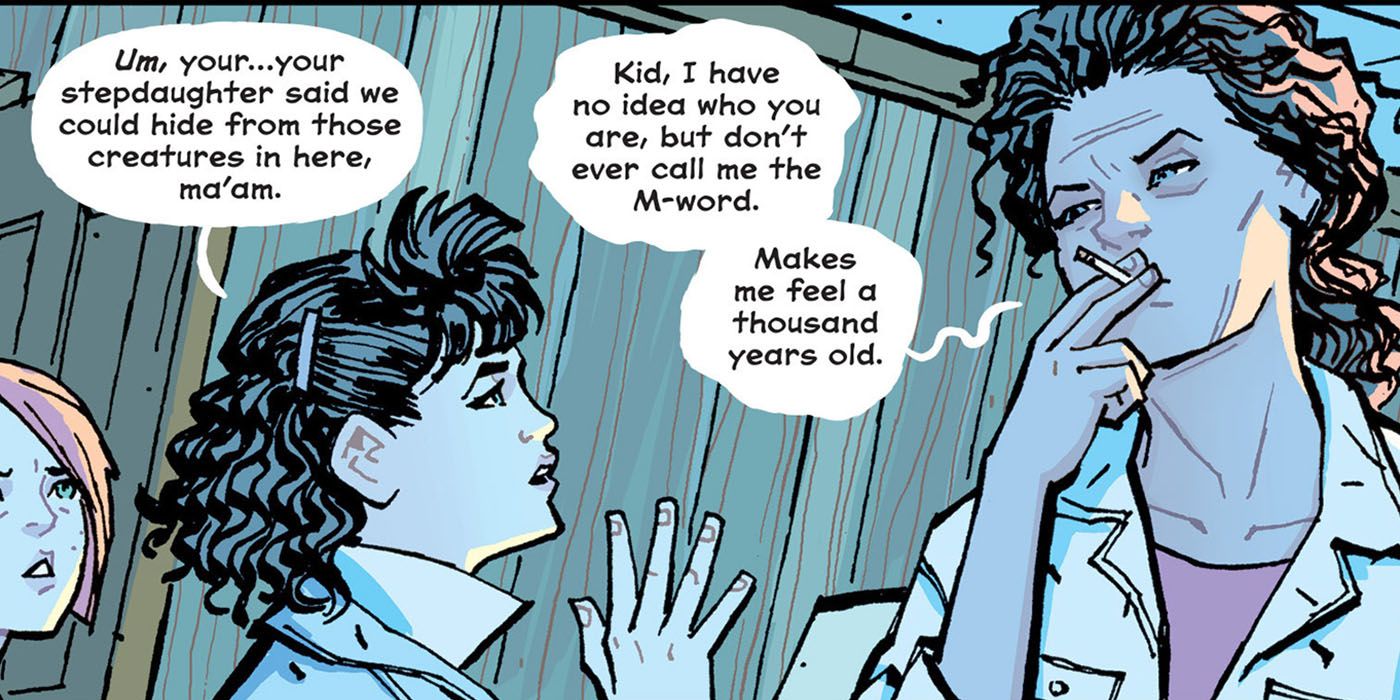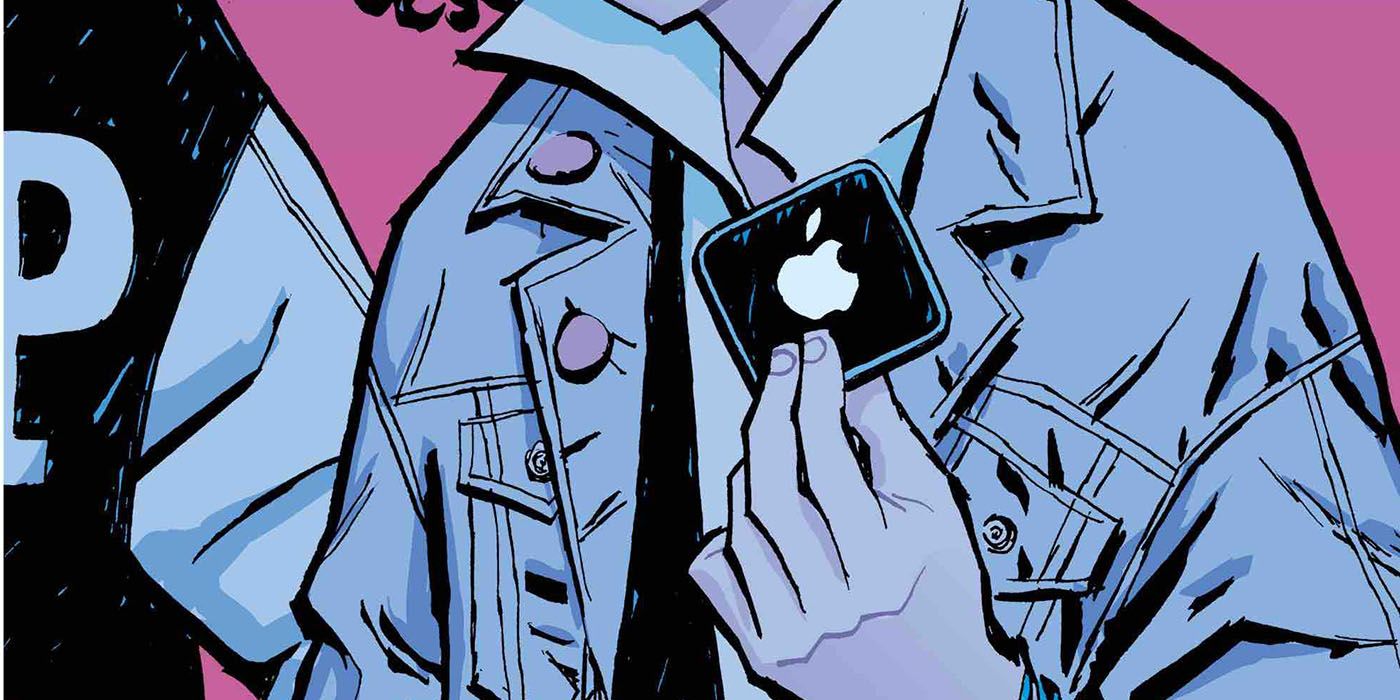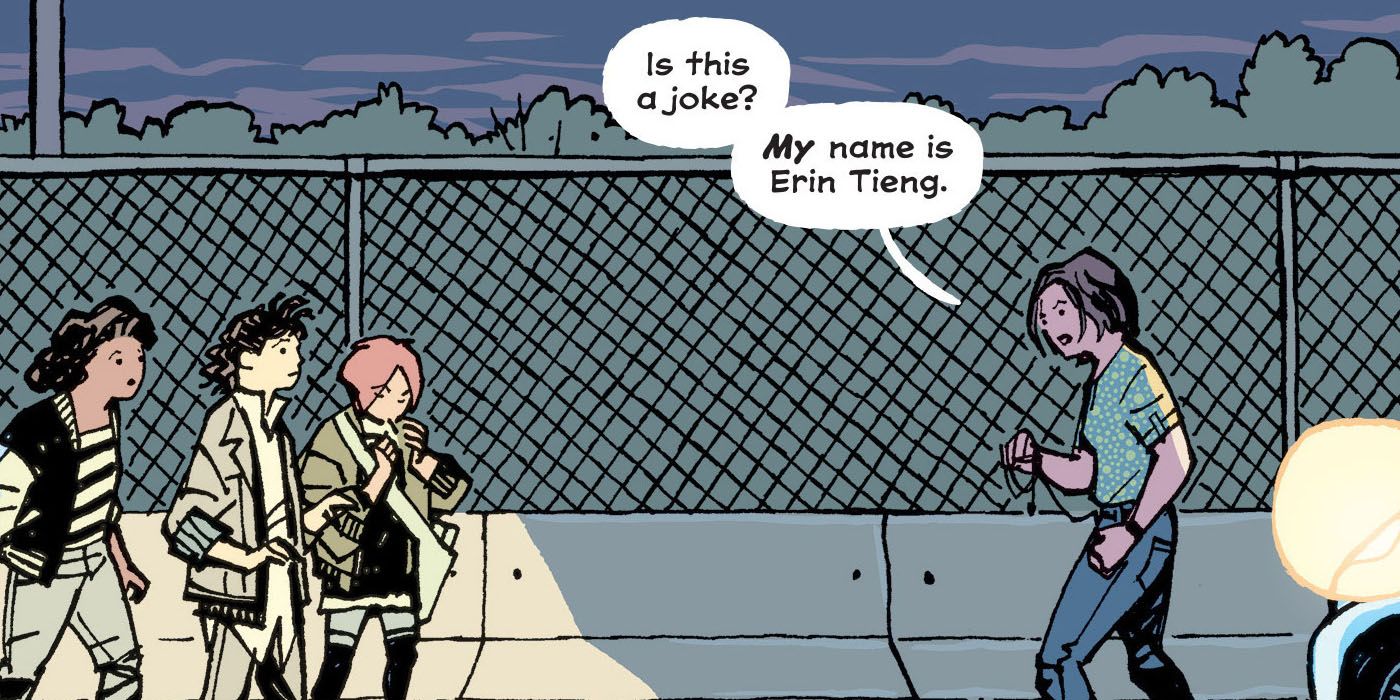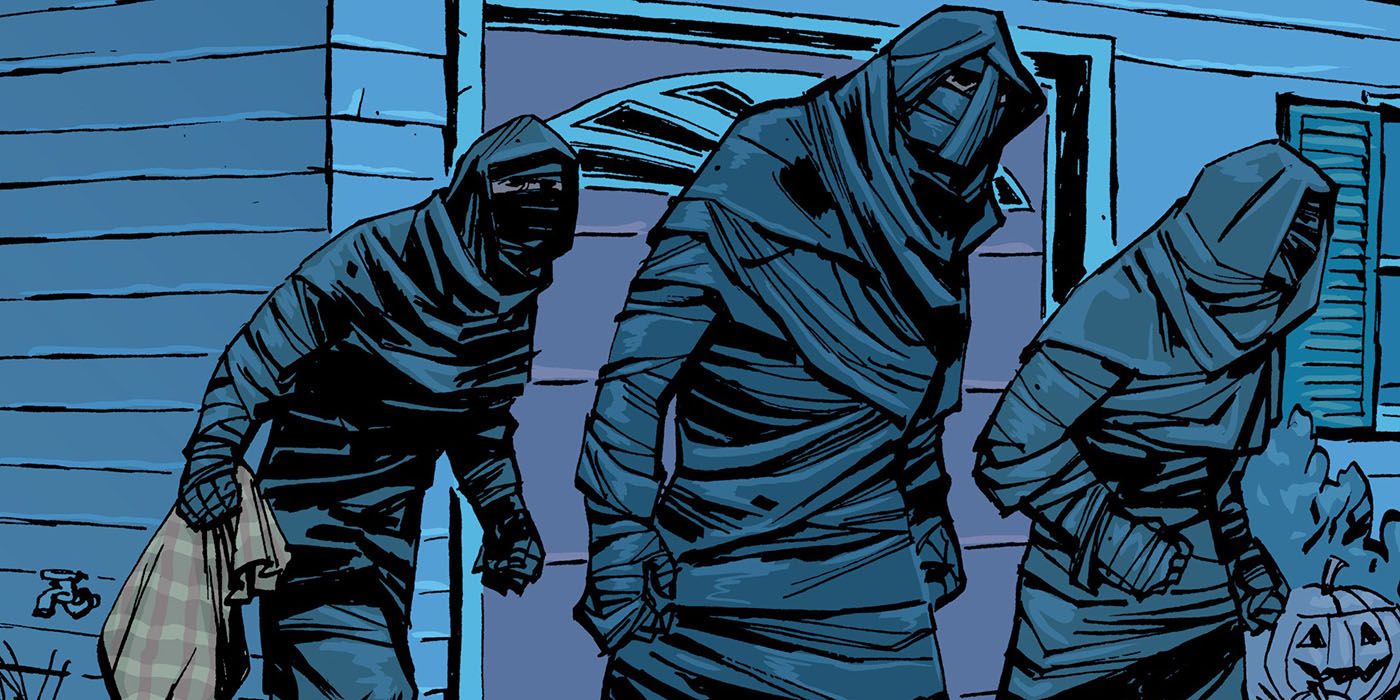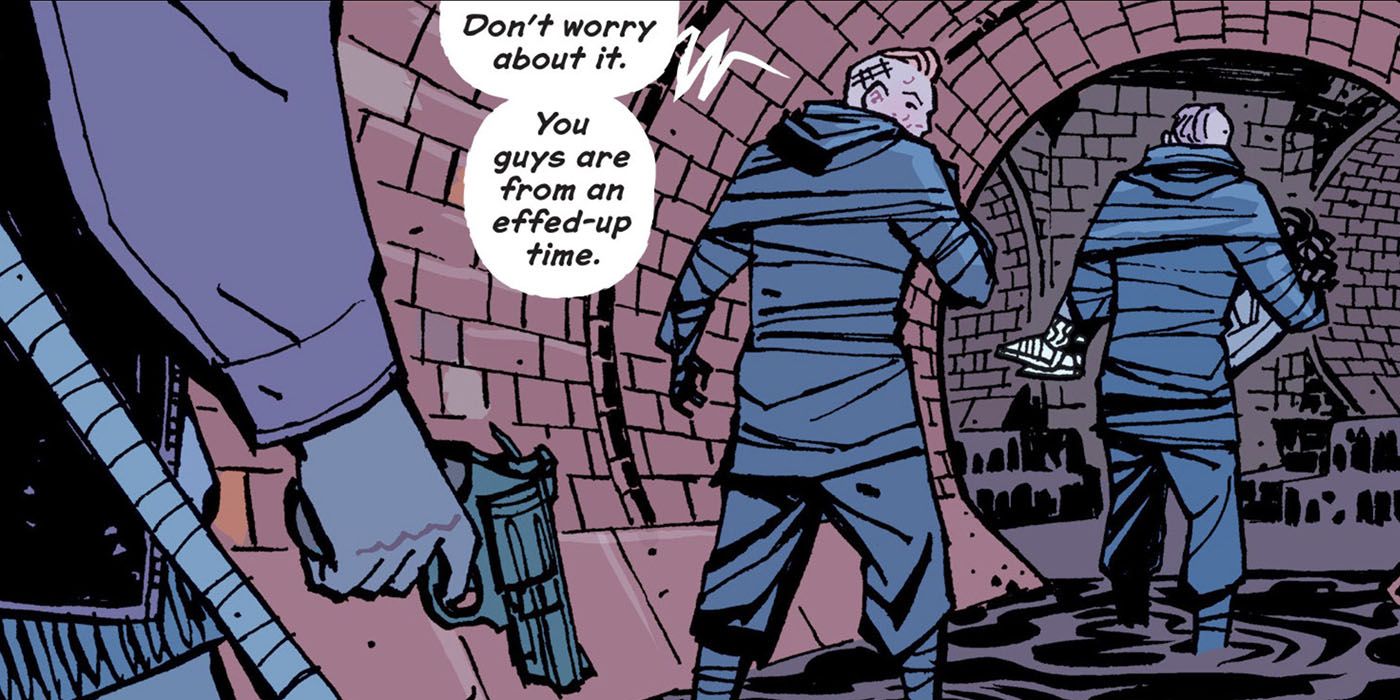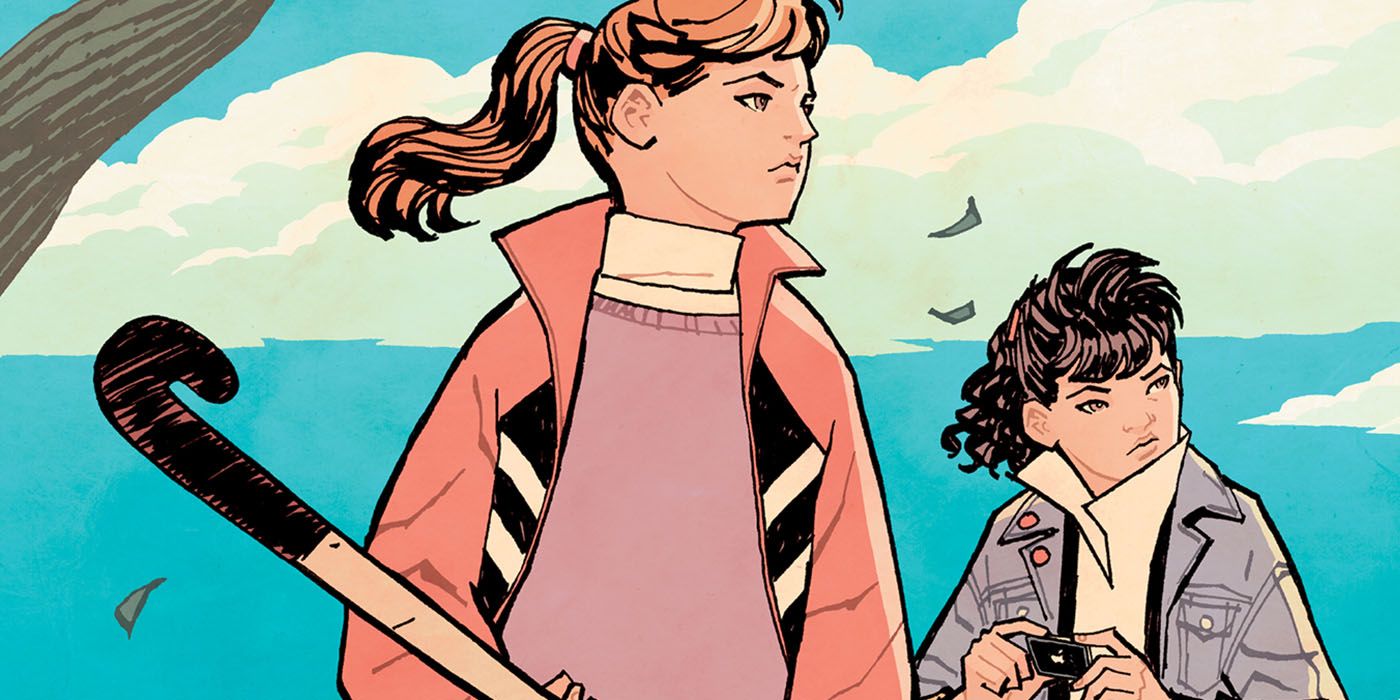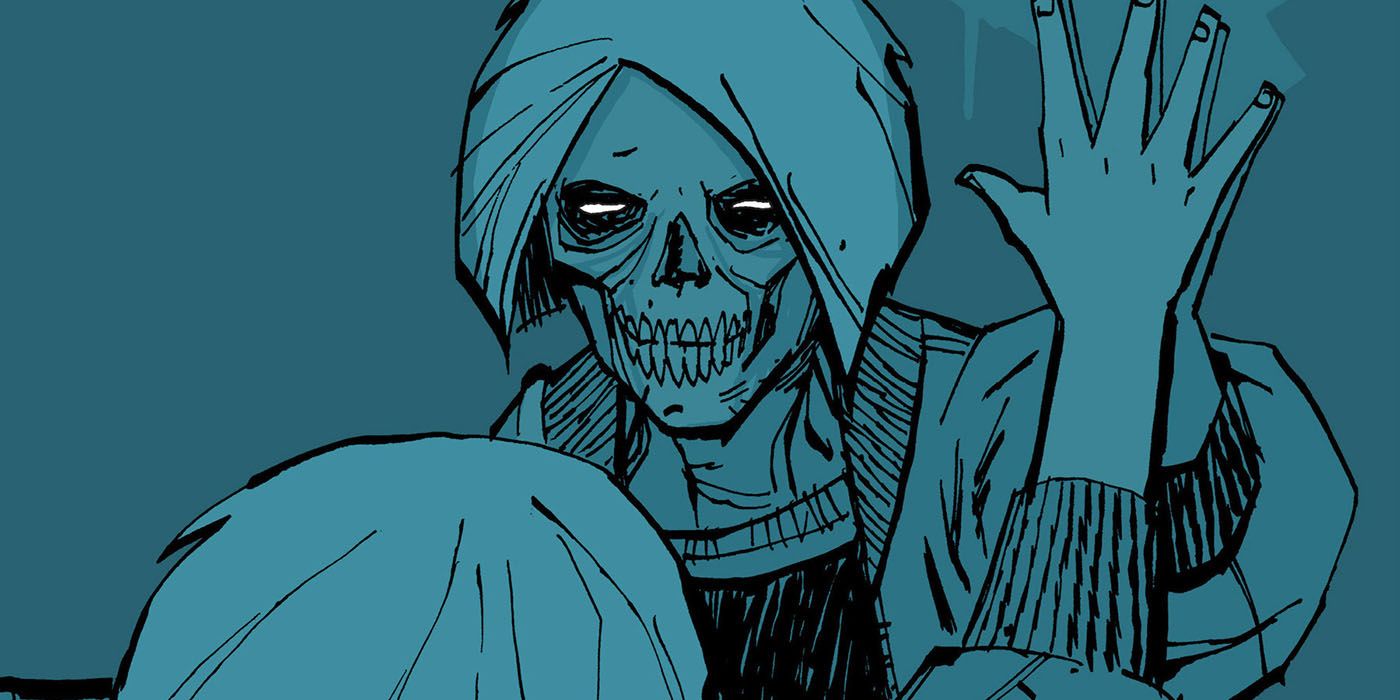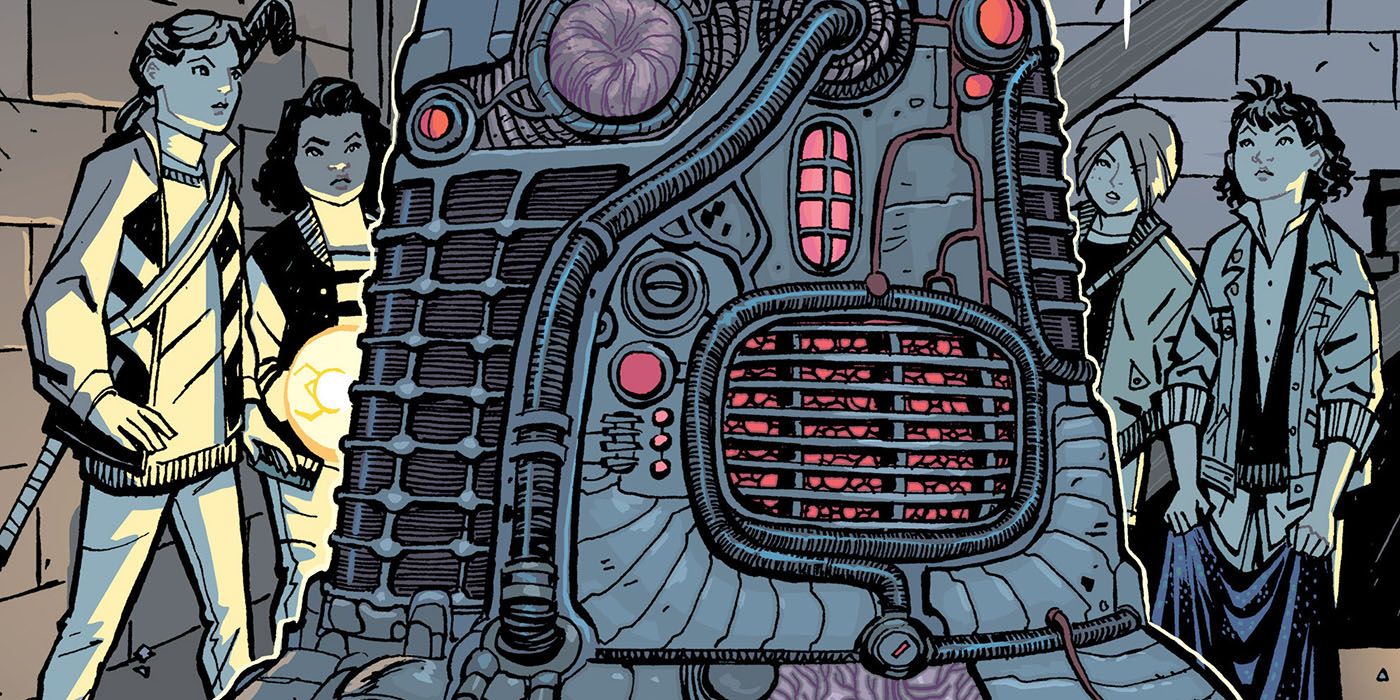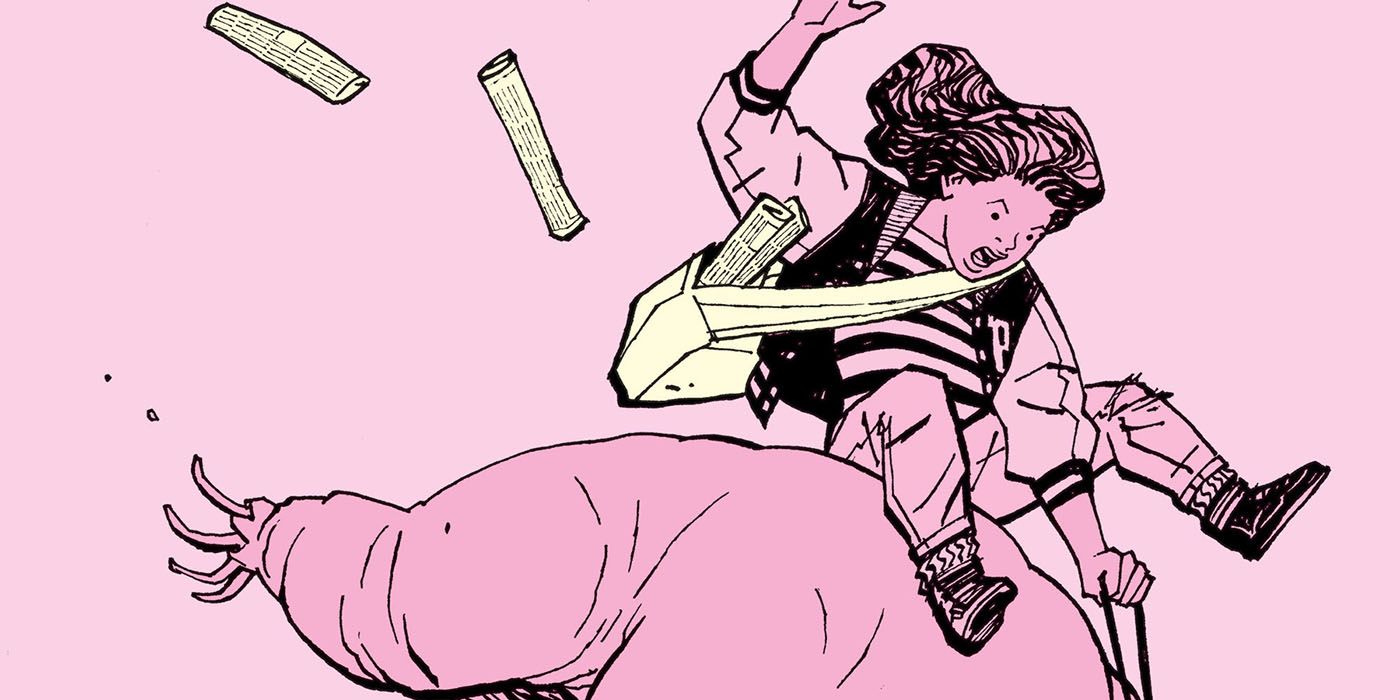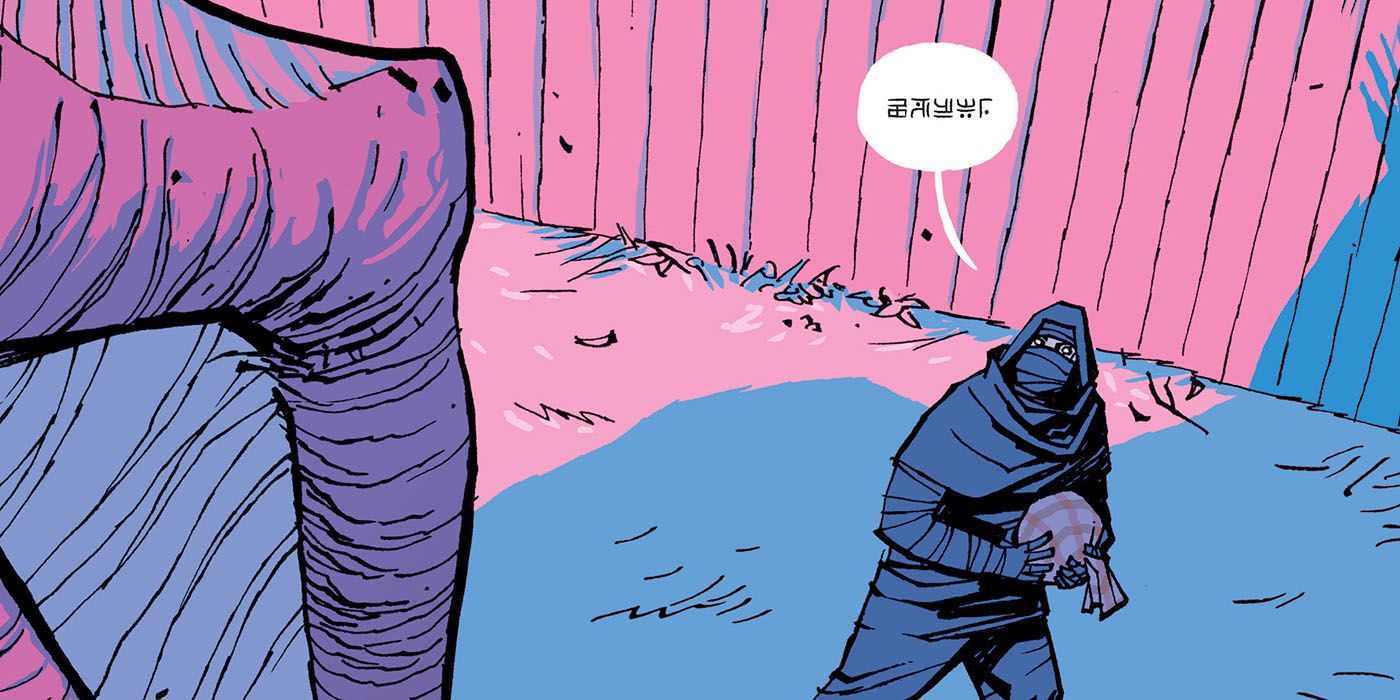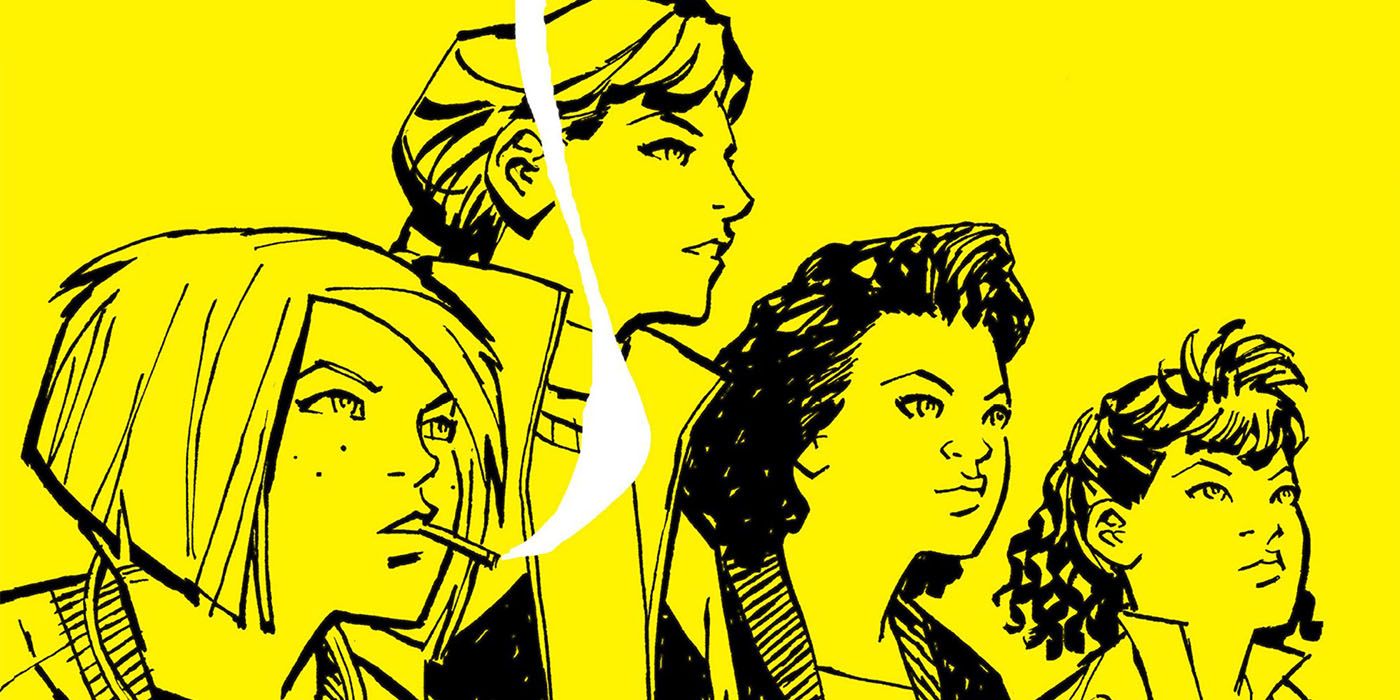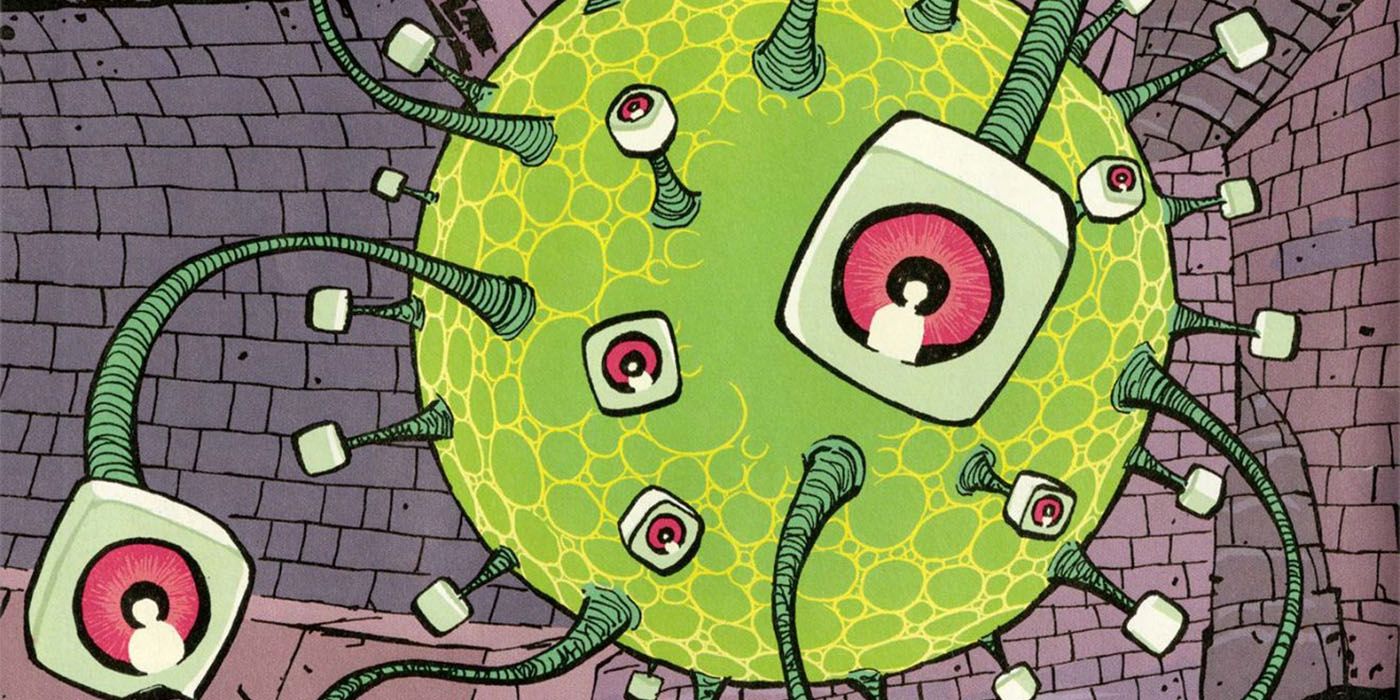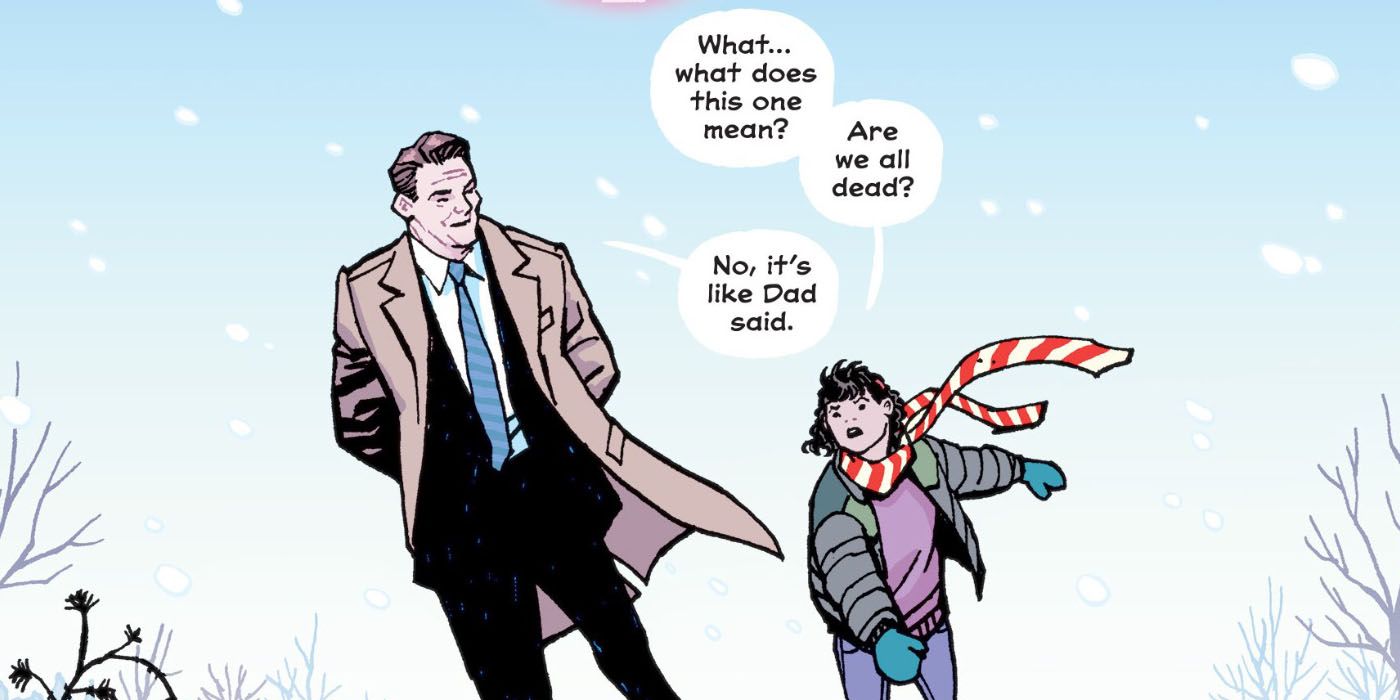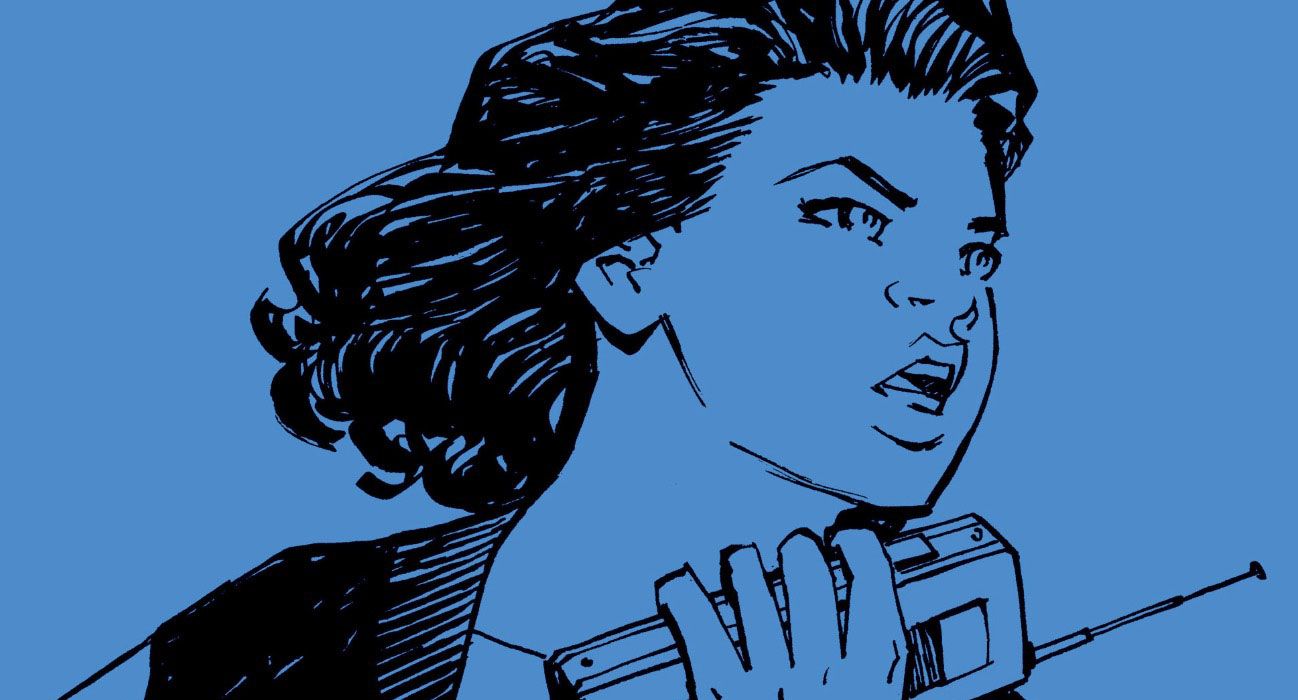In 2016 the Duffer Brother's "Stranger Things" emerged out of Netflix and quickly became the internet's new favourite show. It wasn't long before people everywhere were cos-playing as Eleven, praising Winona Ryder's performance and mourning the death of sweet, sweet Barb (may she rest in peace). Packed full of '80s goodness and simply oozing with nostalgia, "Stranger Things" felt like the best new show you didn't even know you wanted.
RELATED: Image Comics: The 15 Best Titles (In The Last Five Years)
Nobody at CBR is contending that "Stranger Things" isn't good, or great even. What we are suggesting is that maybe, just maybe, there's a story out there that does everything we love about "Stranger Things," only better! That story is "Paper Girls," a comic series by Brian K Vaughan and Cliff Chiang, published by Image comics. Before you pick up your pitchforks or grab a handful of rotten tomatoes, please hear us out as we give you 15 reasons why Netflix's new golden child can't compete with "Paper Girls."
15 THEY DON'T NEED NO ADULTS
Erin, Mac, Tiffany and Kj -- Brian K Vaughan and Cliff Chiang's titular "Paper Girls" -- manage to dodge giant pterodactyls, free-fall from a helicopter and travel through time. And they do it all without any adults -- with the notable exception of an assist from 40-year-old Erin and her sister Missy. "Paper Girls" takes the idea of a kids-own-adventure and takes it very literally.
Whereas Mike and the gang in "Stranger Things" eventually get help from Joyce and Sherrif Hopper, Erin and her friends are on their own against the perils of the time stream. When weird occurrences begin to happen the morning after Halloween, the girls are unable to rely on any of the adults in their lives for assistance. In fact, most of the adults the girls encounter are more of a hindrance than a help. A police officer hassles Mac, Mac's mom accidentally shoots Erin and even future-Erin is too needy and unstable to provide the girls with much meaningful help.
14 CULTURALLY RELEVANT
As fun and enjoyable as "Stranger Things" was, by strongly borrowing from and emulating '80s cinema, it lacked any social commentary. Long story short, it told us nothing about ourselves except that we still really, really love the '80s. Although there is obviously nothing wrong with that -- who doesn't love an enjoyable trip down memory lane, after all -- you have to give credit to a story that can show you a good time while still possessing a social voice.
In a feat Brain K Vaughan manages to pull of regularly, "Paper Girls" evokes all the nostalgic fun of "Stranger Things" while still reflecting society as it is today. Nestled among Cliff Chiang's stunning art are references to the 2016 election, social media and humanity's potentially troubling relationship with technology. The story itself also features strong feminist undertones as it does, after all, star four capable and interesting young women.
13 THE REALITIES OF GROWING UP
In many ways "Stranger Things" idolizes being a kid. Childhood friendship and young romance are all glorified, stripped back to a fantastical, pristine version. Sure, Mike and Lucas fight, but they ultimately make-up and things return to the status quo. It's all very neat, all very clean and all very satisfying. But it's not particularity realistic. Lost in "Stranger Things'" portrayal of childhood are the not so pleasant parts of growing up. The awkwardness, lack of freedom or the fact that childhood itself is so fleeting and temporary. Although the show would like to have us believe Mike, Lucas, Dustin and Will will stay friends forever, in reality they would probably drift apart as they got older.
Instead of running from these bitter childhood realities, "Paper Girls" confronts them, putting them centre stage. This is particularly apparent in the second story arc, when 12 year-old protagonist, Erin Tieng, meets her 40 year-old self. What transpires is a series of confronting scenes in which Erin must come to terms with the realities of becoming an adult. It might be a tad painful to read, but the comic's narrative is all the richer for it.
12 UNAPOLOGETICALLY WEIRD
For a show called "Stranger Things," the Netflix original isn't all that, well, strange. Sure, the series brings some new ideas to the table, but most of what is there isn't new. Kids with telepathic powers, alternate dimensions and humanoid monsters are all fairly well established sci-fi and horror tropes. We've seen them before and we will no doubt see them again. "Paper Girls," on the other hand, brings plenty of new ideas to the fore while morphing and disorienting what has come previously.
"Paper Girls" isn't a story that holds your hand. It throws you in the deep end and then bombards you with as many strange ideas as it can pack into each issue. An army of adults led by what we can only assume is a descendant of Steve Jobs, disgusting creatures that look like floating balls of jelly and robot bugs that can heal any wound are just some of the bizarre things that Brain K. Vaughan and Cliff Chiang submit their readers to. "Paper girls" doesn't just dabble with being strange, it downright revels in it.
11 COMPELLING FEMALE CHARACTERS
In a very short period of time, Eleven stole the internet's heart. "Stranger Things" received a lot of love and praise for its kick-ass telekinetic protagonist, and rightly so. As great as Eleven is though, she can't really compete with the fact that "Paper Girls" features not one, but four, complex, young female characters.
Brain K Vaughan has a reputation for writing interesting and compelling characters and "Paper Girls" is certainly no exception. Instead of just being a face in the crowd, each girl is a fully realised character, each with her own strengths, weakness and personality quirks. There's Mac; The rough kid who grew up on the wrong side of the tracks, Erin; the youngest and most idealistic of the bunch, KJ; a posh private school girl who knows how to handle herself and Tiffany; The hard working and self-assured one. These four pre-teens are capable enough on their own, but together, they make one formidable team.
10 THE ROUGH EDGES
Sure, in terms of pop-culture, the '80s was a golden age -- it gave us "Ghost Busters,""The Teenage Mutant Ninja Turtles" and "Indiana Jones," just to name a few. But in other ways, it was a less enlightened time. If society is on an upward climb toward improvement, then it makes sense things probably weren't as great 30-or-so years ago.
Apart from a single scene where Dustin is threatened at knifepoint by a high school bully -- which was more of a plot point than social commentary -- "Stranger Things" doesn't really acknowledge that, for all its pop-culture glamour, the '80s had a dark-side. "Paper Girls," on the other hand, is not afraid to reveal the decade's rough edges. This aspect of the '80s is mainly shown through the character of Mac -- the roughest and poorest of the Paper Girls. Mac smokes, cusses and uses some pretty offensive homophobic slurs. It may be confronting at times, but Mac's use of the slur was an important periodic detail and a reminder that the '80s weren't great for everyone.
9 NO ROMANCE
It seems weird that "Stranger Things" would pursue a romance storyline given its predominately child cast. Mike and Eleven's crush on each other is awkward to watch at best. The whole romantic relationship between the two characters felt highly manufactured, as if it was a symptom of television's obsession with coupling characters off rather then an organic plot point. Although it was only a minor misstep, "Stranger Things" would have almost certainly been a stronger show if it had left out Eleven and Mike's romantic relationship and instead just focused on their friendship.
"Paper Girls" avoids making this mistake and instead focuses purely on friendship. There are no childhood crushes here, just four friends navigating the complexities of growing up -- and also time travel -- together. Instead of going for sappy romance, "Paper Girls" explores the dynamics of female friendship and the close bond that develops between the four girls. Instead of an awkward and forced kiss, what eventuates are genuine and sincere moments of human connection.
8 NO PULLED-PUNCHES
As anyone who has ever picked up one of his comics can attest, Brain K. Vaughan is not a man who is afraid to speak his mind. As a result, his comics are direct and to the point, usually articulating his viewpoints and perspectives on potentially hot-button issues. Even though it features a largely pre-teen cast, "Paper Girls" is no exception. A prime example of this is when the Tiffany and Mac -- who have been transported to the distant future of 2016 -- pass a "Hillary for President" sign. After seeing the sign, Tiffany remarks "How do you know? Maybe America's already had four women in charge by now." Exchanges like this mark "Paper Girls" with its writer's political and ideological leanings.
Although "Paper Girls'" directness and outspokenness on political and moral issues may put off some readers, it also makes it clear the story has a worldview and a message. In comparison, "Stranger Things" remains neutral and avoids courting anything too controversial that could turn away potential viewers.
7 TIME TRAVEL
For better or worse, "Stranger Things" is the '80s. Not only is the show set in 1983, it also borrows heavily from the movie tropes and cultural ideas that were popular at the time. While "Stranger Things" is firmly routed in this decade, "Paper Girls" is free to explore whatever time-period it wants. Although the comic's first story arc is set in 1988, the second arc takes the girls to the puzzling "future" of 2016. This change in time periods is all due to the story's inclusion of time travel.
In "Paper Girls'" opening issue, Mac, Tiffany, KJ and Erin come across a bizarre looking time machine in the basement of an abandoned housing development. Equal parts organic material and metal, the strange device would eventually transport Mac, Tiffany and Erin to 2016 and KJ to somewhere else entirely. This trip to 2016 is used to contrast the '80s to the present day and helps to establish the series' identity beyond its initial setting. When it comes to potential settings for "Paper Girls" to explore, the sky really is the limit.
6 THE GIRLS HAVE TO GROW UP
In many ways "Stranger Things" is a show about childhood innocence. Mike, Dustin, Lucas and Eleven -- the show's protagonists -- are all children who are eventually able to overcome the inter-dimensional monster nicknamed the "Demi-Gorgon" by sticking together and treating the encounter like a session of Dungeons and Dragons. Although charming, the reality of this approach -- and its success for Mike and the gang -- is that the kids don't actually mature or grow up; quite the opposite, in fact. Only by doubling down on their reliance on pop-culture and their childish sense of adventure are the kids able to overcome the monster.
"Paper Girls," on the other hand, forces its protagonists to mature in order to overcome their obstacles. Erin is forced to come to terms with a 40 year-old version of herself, Mac confronts her own mortality and all the girls are forced to make some pretty hard choices. All of these situations are far beyond anything a normal child would have to face, but instead of shying away from the challenge and retreating into the comforts of childhood, each of the girls manages to rise to the occasion.
5 MYSTERY
As well as being a character piece, "Paper Girls" is also, at its heart, a mystery. Mac, Tiffany, Kj and Erin are plunged into a time-jumping inter-generational war without any explanation. We don't really know who the good guys are, what the mysterious "curfew" is, why an evil clone of Erin is running around or why the Paper Girls are suddenly so important. These are just a small pinch of the puzzles that "Paper Girls" has thrown our way. It truly is a series that delights in disorienting and confusing its readers.
Although a mystery on the surface, "Stranger Things" gives too much away too quickly. By the time we hit the series' midpoint, it becomes fairly obvious what is going on. This puts the viewer in the awkward position of being several steps ahead of the characters, as they fight amongst themselves and fail to figure out the secrets of the Upside-Down. Although still satisfying to watch, we certainly wouldn't call "Stranger Things" a genuine mystery.
4 VISUAL STYLE
"Stranger Things" brought with it a visual style that strongly emulated Amblin Entertainment's films of the 1980s. The color palette, the costumes and the creature design all showed the visual hallmarks of Amblin's golden decade. The Upside-Down in particular blew fans away for its creepiness, yet relative visual simplicity. Although interesting and somewhat distinct, "Stranger Things'" visuals were -- albeit deliberately -- dark and dreary.
In comparison, "Paper Girls" incorporates a bright, yet moody, visual motif. Cliff Chaing's angular and iconic line work is coupled with colorist Matt Wilson's rich and diverse palette to create some truly stunning artwork. Even when the story takes a darker or more emotional tone, Chiang and Wilson still manage to deliver some of the most gorgeous pages in modern comics. Combine this with distinct and charming character designs -- courtesy of Chiang -- and you don't just have a great comic, you have a truly remarkable piece of visual storytelling.
3 MORE MONSTERS
The Demi-Gorgon -- "Stranger Things'" big, bad monstrous villain -- was truly one creepy and terrifying creature. Inspired by the Venus fly-trap, the hideous monster could split its head open into five disgusting mouth flaps. As intimidating and unique as the Demi-Gorgon was, it was the only monster that "Stranger Things" had to offer. "Paper Girls," on the other hand, plays host to an entire monstrous menagerie.
Nestled among the pages of "Paper Girls," you will find mutant pterodactyls, giant maggots, colossal tardigrades and the truly bizarre Editrix. Making the Demi-Gorgon look downright mundane by comparison, this beast is a floating mass of green jelly and cube-shaped eyes. A type of Poincare, an Editrix is capable of making you relive every moment of your past; literally making your life flash before your eyes. Throw in some eye-laser powers and you have one truly whack creature that is not to be messed with.
2 THE SETTING IS JUST A HOOK
It is not too much of an exaggeration to say that, in many ways, "Stranger Things" is its setting. The show's characters, ideas and charms all rely heavily -- possibly too heavily -- on the fact it is set in the 1980s. Many of the period details are essential plot points to the story and drive it forward. Put simply, without the '80s, "Stranger Things" would be a bland, shallow husk of itself.
This is where "Paper Girls" shines in comparison. Instead of building the story around its initial 80's setting, the comic simply uses the setting as a hook to lure the reader in. The glamour and nostalgia of the decade feel more like a marketing tool to pique interest rather than the crux of the story. This becomes very clear in the second story arc, which takes place in 2016, yet still has all the wonder and charm of the opening issues.
1 QUESTIONS NOSTALGIA
For all of its charm and wonder, "Stranger Things" felt very much like a calculated attempt to tap into our obsession with the past. Almost weaponized nostalgia, "Stranger Things" is all about taking what we loved when we were younger and giving it to us again -- albeit with some darker edges. It's your childhood remixed, combined with all the production value and shine Netflix can provide. And yet, despite this, "Stranger Things" doesn't really explore or portray nostalgia in an interesting light. It simply uses it to sell itself.
Although "Paper Girls" certainly does this too -- to a certain extent, anyway -- it also manages to explore the idea in a meaningful way. The story is literally about a time-spanning inter-generational war and features teens that travel through time to collect treasures from the past. Instead of just taking us back to our past, "Paper Girls" questions why we do it and explores the potential problems with always looking back.
What do you think? Do you agree that Paper Girls wins the day, or is Stranger Things still better? Let us know in the comments!

